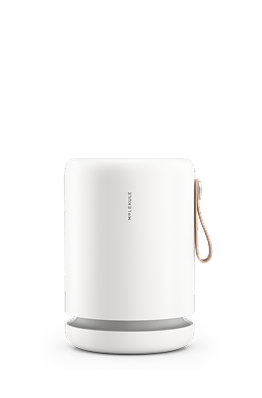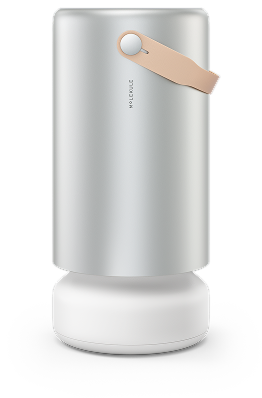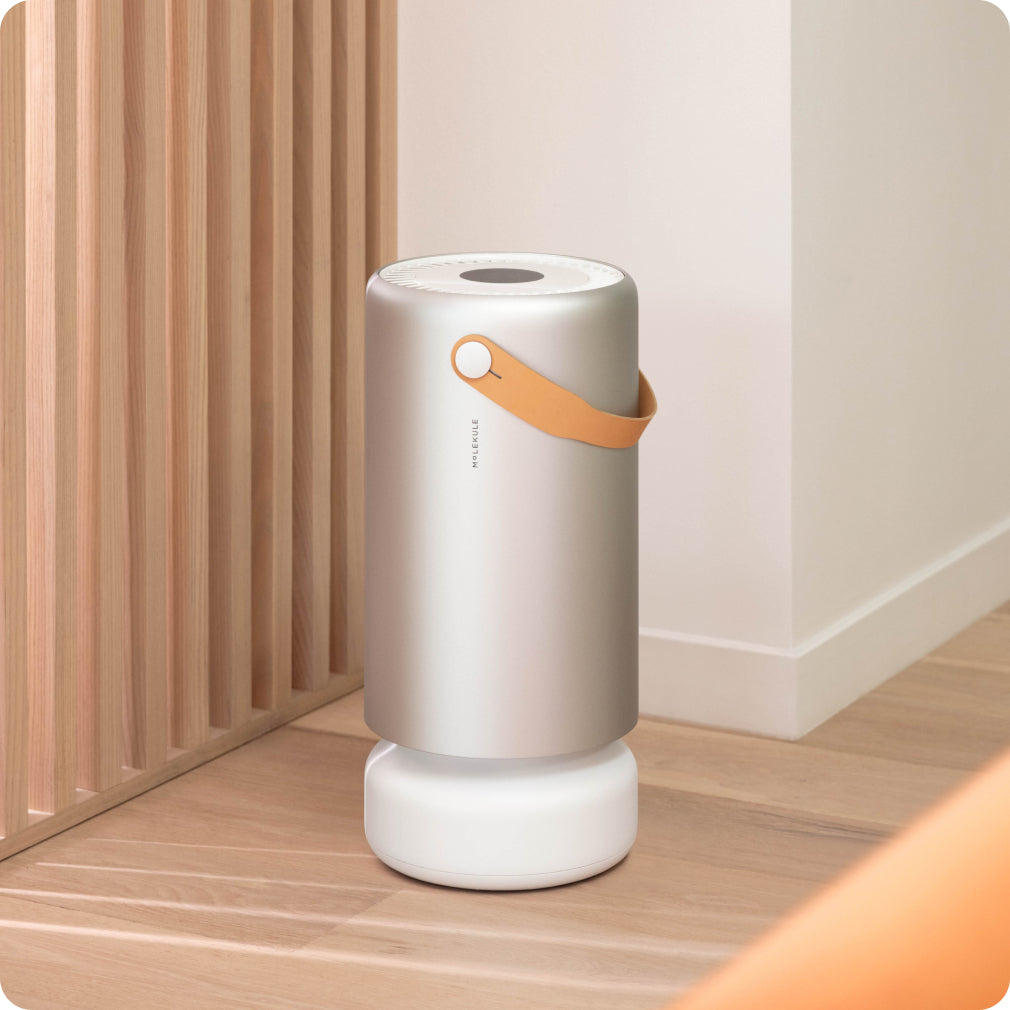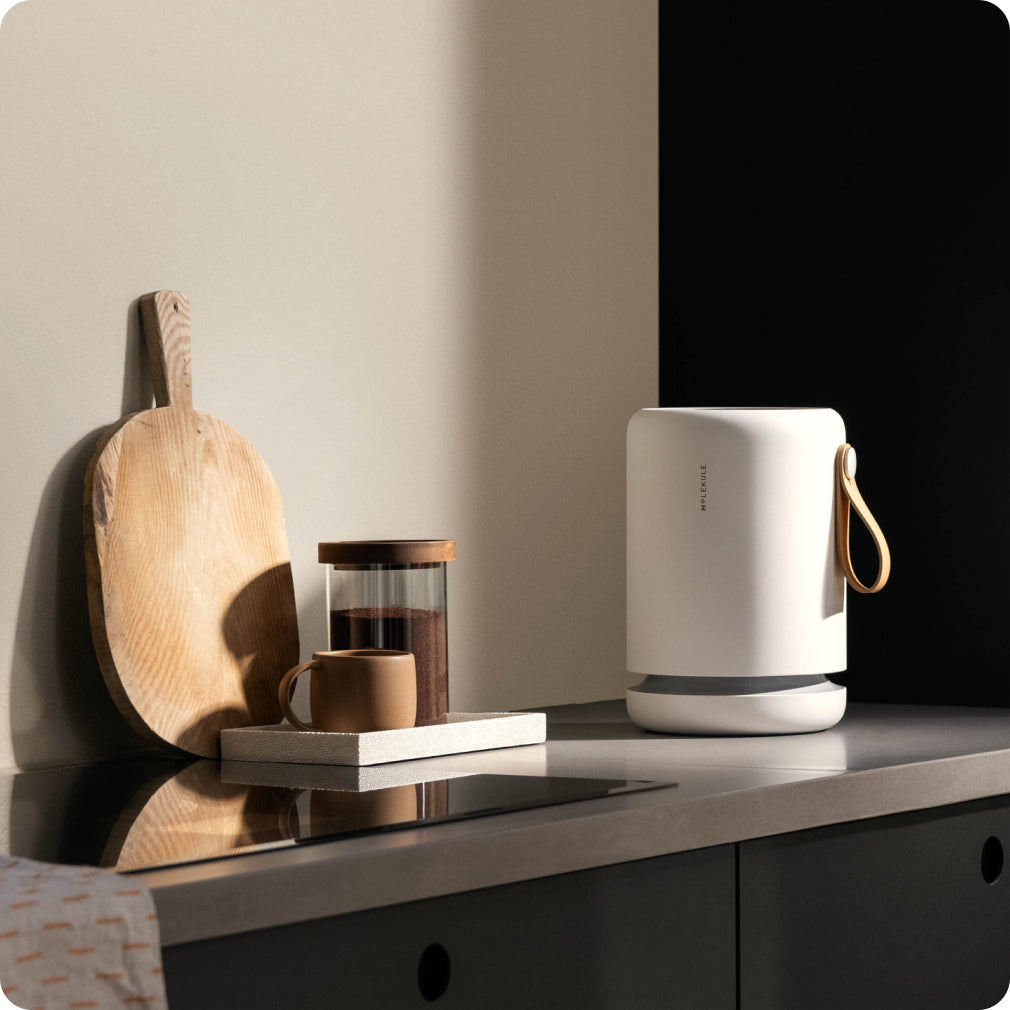If you start sneezing, coughing, or wheezing every time you clean your house, dust might be to blame. Dust isn’t just dirt. It’s a mix of microscopic particles that can irritate your airways and trigger asthma symptoms. Millions of Americans experience asthma attacks each year because of dust mites, their droppings, and other tiny allergens that collect indoors.
While cleaning and filtration can help, they often only provide temporary relief. Advanced air purification systems that destroy allergens at the molecular level offer deeper, longer-lasting protection. Read on to learn how to eliminate dust mite proteins and other asthma triggers permanently, breaking the exposure cycle that keeps symptoms active even in spotless homes.
Key Takeaways
-
Main Triggers: Dust mites, their droppings, and body fragments are the most common indoor asthma triggers.
-
Common Symptoms: Wheezing, coughing, chest tightness, shortness of breath, and severe attacks requiring emergency care.
-
Dust Hotspots: Mattresses, pillows, carpets, upholstered furniture, curtains, and stuffed toys.
-
Environmental Controls: Allergen-proof bedding, hot water washing, humidity between 30–50%, and HEPA filtration.
-
Advanced Protection: Molekule’s PECO-HEPA technology destroys allergens instead of just trapping them.
How Dust Affects Asthma
Dust exposure triggers asthma by irritating sensitive airways and causing inflammation that makes breathing harder. According to the Environmental Protection Agency, most people spend up to 90% of their time indoors, meaning indoor allergens like dust mites play a huge role in asthma control.
Household dust is a combination of dead skin cells, pet dander, fabric fibers, mold spores, pollen and dust. Within that mix are dust mites, microscopic insects that feed on skin flakes and release allergenic waste particles that can cause coughing, wheezing, and even severe asthma attacks.
The Dust Mite Connection
Dust mites thrive in warm, humid environments such as bedding, carpets, and upholstered furniture. The average person sheds enough skin each day to feed over a million mites. They reproduce quickly in conditions above 70°F and 50% humidity but die when humidity drops below that level.
Exposure to dust mites doesn’t just worsen asthma in those who already have it. Research shows it can actually cause asthma to develop in children who were previously symptom-free. In adults, ongoing exposure may lead to chronic inflammation and more frequent flare-ups.
Recognizing Dust-Triggered Asthma Symptoms
Dust-triggered asthma can cause:
-
Persistent coughing or wheezing
-
Chest tightness or pain
-
Shortness of breath
-
Trouble sleeping due to coughing at night
Symptoms often worsen after cleaning or during sleep, when allergens are stirred up or concentrated in bedding. If you or your child experiences severe breathing difficulties that don’t improve with medication, seek emergency care immediately.
10 Ways to Reduce Dust and Prevent Asthma Attacks
1. Use Allergen-Proof Bedding
Encasing mattresses, box springs, and pillows in zippered, allergen-proof covers prevents dust mites from settling and multiplying. Wash bedding weekly in hot water (130°F or higher) and dry completely on high heat. For children, wash or freeze stuffed toys weekly to kill mites, and consider utilizing air purifiers for kids' rooms to maintain clear air.
2. Maintain Healthy Humidity
Keep indoor humidity between 30–50%. Dust mites can’t survive in dry environments. Use a hygrometer to monitor levels and a dehumidifier in damp areas like basements or bathrooms. Consider basement air purifiers as well to assist with maintaining fresher air.
3. Minimize Dust-Harboring Surfaces
Replace wall-to-wall carpeting with hard flooring whenever possible. Vacuum carpets weekly with a sealed HEPA system and use washable rugs instead of heavy carpeting. Choose blinds or washable curtains over fabric drapes.
4. Clean the Right Way
Avoid dry dusting, which spreads allergens into the air. Use a damp microfiber cloth or dust-attracting wipes. If you have asthma, ask someone else to vacuum and leave the room for an hour afterward to allow dust to settle.
5. Upgrade HVAC Filters
Install high-efficiency filters (MERV 11 or 12) in your HVAC system and change them regularly. Run the fan continuously for better air circulation and consider professional duct cleaning to prevent dust buildup.
6. Use Advanced Air Purification
Traditional HEPA purifiers capture particles but can’t destroy allergenic proteins. Molekule’s PECO-HEPA Tri-Power technology captures and breaks down dust mite allergens into harmless water vapor and carbon dioxide. This prevents allergens from building up or being released during filter changes. Read more about the best air purifier for dust mites.
7. Protect Against Outdoor Dust
During dust storms or high-pollen days, keep windows closed and air conditioning on recirculation mode. Check your local air quality index (AQI) and limit outdoor activities when air quality is poor.
8. Reduce Clutter
Dust collects on books, knickknacks, and other unused items. Store belongings in closed containers and keep surfaces clear, especially in bedrooms where asthma symptoms are most likely to worsen.
9. Manage Pet Dander
Pet dander is a major dust component and asthma trigger. Keep pets out of bedrooms, wash bedding and covers weekly, and vacuum frequently with a HEPA-equipped vacuum.
10. Prevent Mold Growth
Mold spores add to the dust burden and feed dust mites. Fix leaks quickly, dry wet areas within 48 hours, and maintain humidity below 50%. Use exhaust fans in bathrooms and kitchens to reduce moisture, strategically place air purifiers for mold in moisture-prone areas, and schedule a professional mold inspection at the first sign of trouble.
Why Regular Air Purifiers Fall Short
Standard HEPA filters trap dust but can’t destroy the proteins that trigger asthma attacks. As filters fill up, allergens can be released back into the air, and cleaning or replacing filters can expose users to concentrated dust.
PECO technology eliminates this problem by destroying allergens and pollutants at the molecular level. Instead of collecting asthma triggers, it neutralizes them, providing a cleaner, safer breathing environment around the clock.

Molekule’s Approach to Asthma Control
The Molekule Air Pro combines PECO technology with true HEPA filtration to destroy asthma triggers in rooms up to 1,000 square feet. It adjusts automatically to changes in air quality and operates quietly between 30–65 decibels, ensuring uninterrupted rest.
The Molekule Air Mini+ delivers the same molecular destruction in smaller spaces up to 250 square feet, making it an ideal air purifier for bedrooms where dust exposure is highest during sleep.
Independent studies have shown that Molekule’s technology can remove over 90% of allergen proteins within one hour, providing measurable relief for people sensitive to dust and airborne irritants.
Building a Comprehensive Asthma Management Plan
Environmental control is one part of managing asthma effectively. Work with your healthcare provider to follow an asthma action plan that includes:
-
Preventive and rescue medications
-
Regular monitoring with a peak flow meter
-
Tracking symptoms and environmental triggers
-
Annual check-ins with an allergist or pulmonologist
By combining proper medical care with allergen-proof bedding, controlled humidity, and continuous molecular-level air purification, you can significantly reduce dust exposure and prevent asthma flare-ups before they start.
The Bottom Line
Dust exposure may be unavoidable, but its impact doesn’t have to be. By keeping your home clean, dry, and equipped with advanced air purification, you can breathe easier, sleep better, and protect your lungs from one of the most common asthma triggers found indoors.
Frequently Asked Questions
How does dust exposure trigger asthma attacks?
Dust contains microscopic dust mites, their droppings, and body fragments that cause airway inflammation, bronchial constriction, mucus production, and breathing difficulty in sensitized individuals. The allergen proteins trigger immune responses that lead to asthma symptoms and attacks.
What are the warning signs of a dust-triggered asthma attack?
Early warning signs include increased coughing, mild wheezing, chest tightness, shortness of breath, difficulty sleeping due to breathing problems, and decreased peak flow measurements. Severe symptoms requiring emergency care include extreme breathing difficulty, inability to speak, and bluish lips or fingernails.
Can dust exposure cause asthma in people who don't have it?
Yes, evidence shows that ongoing exposure to dust mite allergens can cause new asthma development in children and potentially worsen respiratory function in adults without previous asthma, making dust control important for prevention as well as management.
How often should I clean to prevent dust-triggered asthma attacks?
Vacuum carpets and upholstery weekly, wash bedding in hot water (above 130°F) weekly, damp dust surfaces twice weekly, and maintain continuous air purification with molecular destruction technology for optimal asthma trigger control.
What's the most effective way to reduce dust mites in the bedroom?
Use allergen-proof mattress and pillow covers, wash all bedding weekly in hot water above 130°F, maintain humidity below 50%, remove carpeting, and use specialized air purifiers for bedrooms that destroy dust mite allergens at the molecular level.
When should I seek medical care for dust-related asthma symptoms?
Seek emergency care for severe breathing difficulty not relieved by rescue medication, inability to speak full sentences, rapid symptom worsening, chest pain, or bluish discoloration. Consult your doctor if symptoms interfere with daily activities or sleep despite environmental controls.







